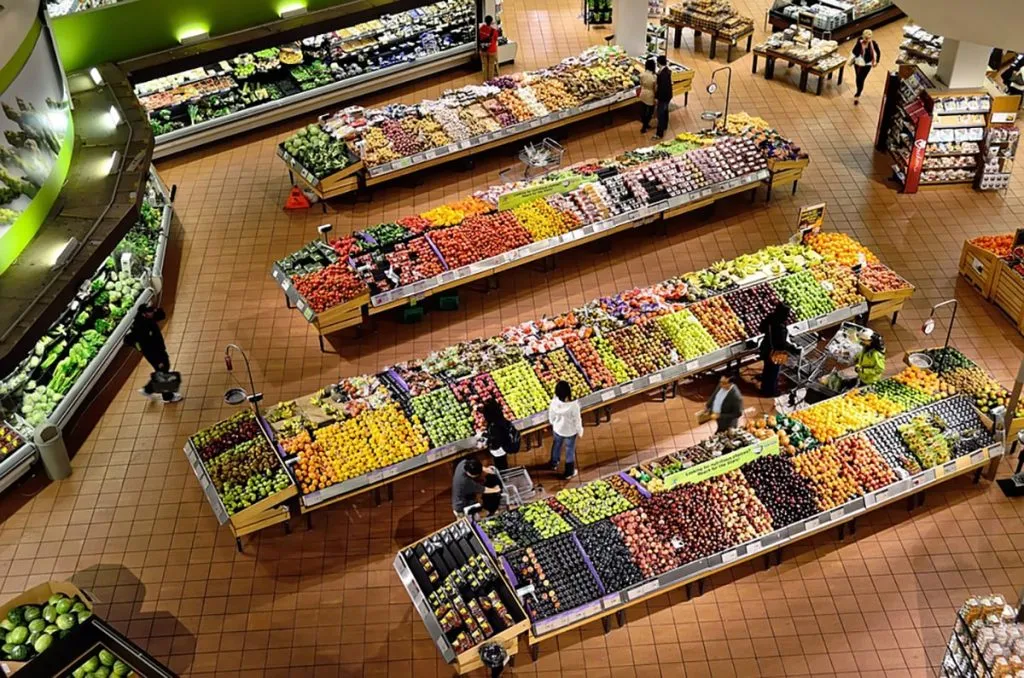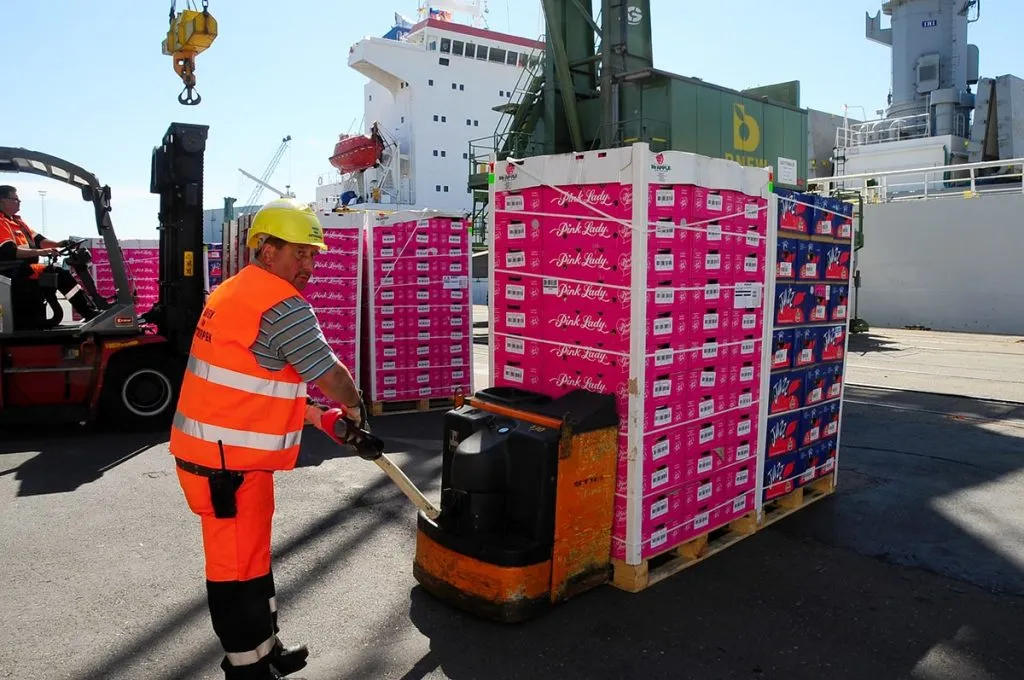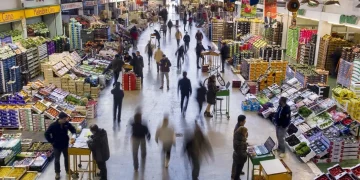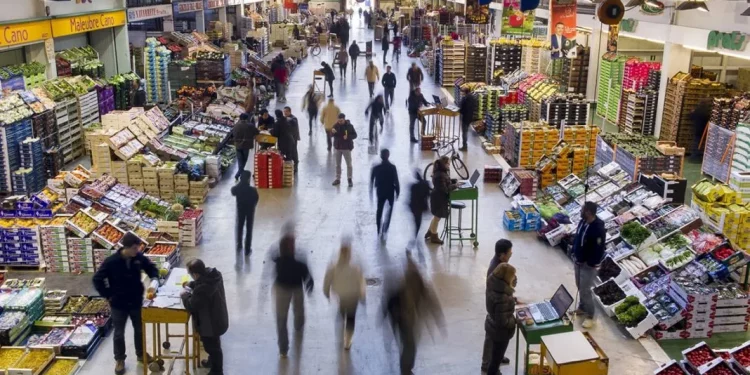The fruit and vegetable sector is a field in continuous evolution that has undergone an important revolution as a result of the Covid-19 pandemic. The advances in the digital and technological field, the new consumption habits, together with inflation and the increase in energy costs in recent times are affecting a market that, despite the adversities, continues to be competitive.
An evolution that has required both SMEs, as well as retail sellers, as well as large companies selling and distributing fruits and vegetables, a rapid adaptation in terms of their business models.
In this sense, they have been forced to minimize their costs, to be more efficient and to increase, on many occasions, their investments in the technological field.
Sustainability, in the spotlight
Sustainability will once again be one of the most relevant trends in the fruit and vegetable market in 2023. The industry of the sector already considers this factor to be non-negotiable, and it is presented as a continuous challenge in each of the parts of the fruit and vegetable business.
A challenge in line with what is established by the United Nations (UN) in its Sustainable Development Goals. The Sixth Assessment Report of the Intergovernmental Panel on Climate Change (IPCC), already advanced in mid-2022 that this problem is intensifying and that some trends that have occurred in recent decades are already irreversible.
In this context, fruit producers, suppliers and vegetable retailers have been setting very ambitious environmental targets, and investments in the environmental field have become a priority.
Investments that in 2023 will continue to have an impact on the use of alternative energies, on more sustainable packaging and also on aspects related to logistics and transport. These will also be aimed at alleviating the problem posed by the unpredictability of the weather, which has meant that the purchase of fruits and vegetables is more complex now than a few years ago.
This unpredictability can be seen in certain products, such as the cultivation of the berry in Spain. Due to the instability in temperatures in the Iberian Peninsula, producers have sought alternatives for its cultivation in places located further south, such as Morocco.
On the other hand, in the search for this sustainability, companies and states are increasingly making more drastic decisions. France has already banned plastic packaging for unprocessed fruits and vegetables weighing less than 1.5 kilograms.

In the private sector, the Swedish retailer ICA and the supermarket chain Rewe in Germany have launched laser labeling, while Lidl Switzerland is funding research to maintain, with a product resulting from the crushed peel of fruits and vegetables, the freshest bananas and cucumbers without the need to wrap them in plastic.
The fruit and vegetable market, to adapt to the international situation
The price of energy prices, the international economic situation and inflation have also altered the fruit and vegetable market. Thus, in the eurozone, the prices of products, including fruits and vegetables, have been rising throughout 2022, especially in countries such as Germany.
In the UK, the last year and a half has seen the highest prices since 1990, as has happened in the United States and Japan. The conflict between Ukraine and Russia has undoubtedly influenced this issue, although, at the end of 2022, this inflation has been dampened in some countries such as Spain.
For the fresh produce business, energy prices are a cause for concern, to which the cost of transport should be added. In maritime transport, experts predict that 2023 could be a year of normalization of transport costs, after the increase they suffered after the pandemic, where they reached their historical highs.
All these circumstances have put the fresh produce supply chain under high pressure. In addition, another factor should be added, such as fertilizer prices, which have suffered an increase as a result of the war between Russia and Ukraine.
As for the forecasts for this year, the trend points to the fact that premium products could suffer in 2023, while food and basic items could attract a greater market share. Some experts also talk about the growth of organic products, continuing the trend for this type of product in the last decade.
The importance of a healthy diet
Health and wellness continue to occupy an important place in the trends for the fresh produce business in 2023. Consumers are looking for more nutritious, healthier foods that allow them to improve their diets, a parameter that was significantly accentuated with the pandemic.

In this regard, the importance of vegan foods, vegetarian diets and plant-based foods have been gradually increasing. The United Nations declared 2021 as the International Year of Fruits and Vegetables, with the aim of highlighting the importance of these products, a fact that demonstrates the growth of awareness that exists around this issue.
For their part, companies have been able to collect this awareness, and there are many studies that highlight the importance for citizens of eating a balanced diet. Some products such as cabbage, broccoli, peppers or citrus fruits have increased their sales, especially in countries such as Finland, where healthy eating has become a kind of religion.
However, the consumption of fruits and vegetables has not skyrocketed and remains below the levels recommended by the World Health Organization. In fact, the WHO itself attributed the death of about 3.9 million people worldwide in 2017 to the lack of fruits and vegetables in their diets.
Proximity products gain followers
The consumption of local and seasonal products has been gaining followers in recent times. A trend that will continue to increase and that also has economic and environmental benefits. Consuming local products is also associated with eating healthier.
Some companies such as Danone have set themselves the goal of sourcing, as much as possible, local fruit from the place where their products are consumed. One of its products in France, the “Aux Fruits d’ici“, whose meaning is ”local fruits”, seeks precisely to stock up on these nearby products.
Combining online sales with physical
Last year, the Chinese company JD opened its first physical stores in Europe. It was not the only e-commerce giant to try to combine electronic sales with physical sales. Without going any further, Amazon, through Amazon Go, has already opened in the United States and the United Kingdom a system that in short is based on a physical supermarket in which there are no ATMs, seeking to combine physical sales with electronics in this way.
In the case of JD, its sales points in the Netherlands are nothing like traditional supermarkets, but rather a collection place for orders that are stored and taken by a robot to this collection point.
Likewise, traditional supermarkets continue to make progress in their e-commerce website models, as home delivery continues to make its way. The objective of these new models is to combine both types of sales, in an increasingly urban society and with less time availability.
Create more complete and flexible supply chains
Supply chains have been changing as the market has evolved and technology has appeared.
However, in the fruit and vegetable sector, unlike what happens in other sectors, the merchandise faces various obstacles from the moment it is picked up in the field until it reaches the consumer, such as temperature or the need to maintain the quality of the product.
This issue is a huge challenge for the supply chain, which is why the development of these chains is presented as a strategic feature for the fresh produce business of this 2023. Companies and retailers should forge alliances to continue improving supply chains, making them more complete and more flexible in order to minimize risks.
The sector continues to mechanize and advances in the digital field
The fruit and vegetable industry is facing a lack of workers along the supply chain, including the actual collection of the product in the field. To cite an example at an international level, New Zealand has had problems picking kiwis and apples, a problem that Spain is also no stranger to.
At the same time, the mechanization of the field has been gaining space and is already very widespread in some crops. In addition, many fresco companies continue to intensify their strategy in the digital field, a bet that can alleviate a lack of workers that in other times has been abundant.
More varieties of fruits and vegetables are emerging
Find the best Pink Lady apple or the best SunGold kiwi. Genetic modification is an area in continuous evolution in the fruit and vegetable sector, a scientific branch that will continue to be one of the trends this year and probably in the future.
In this line, the fruit and vegetable market continues to be, despite being a complicated sector for registered brands, an area to continue trying new things.
As an example, in Japan, new varieties of fruits and vegetables are being registered, and according to a report by Asian Reviez, about 28,600 fruits, vegetables and other crops were registered by the Japanese government at the end of September 2021, which means three times as many as were registered in 1994.
The consumer is looking to experiment with new flavors
Related to the genetics of the taste of the previous device, for many consumers it is no longer enough that the product is healthy. The consumer wants to experiment, to enjoy the experience that provides a new taste, and this issue has not gone unnoticed by the companies that produce and sell these products.
An example of this is the Belgian and Dutch cooperative BelOrta, which grows about 50 different varieties of tomato. Each of them offers a different flavor, so that each consumer can purchase the variety that he likes the most.
Its success demonstrates the importance of taste for consumers, showing themselves to be increasingly demanding in this aspect. In addition, this good taste must last throughout the supply chain, and this point also presents itself as a challenge for the fruit and vegetable sector.
Technology, the best ally
Technology has multiple applications and effects and that is why it is one of the trends to take into account for 2023. Although it is a very broad term and with many applications, technology continues to take hold as one of the most determining factors in the field of frescoes.
Technology is also presented as one of the solutions to the lack of labor in the field, as well as for the supply of products, for their transportation and distribution, and also for retail sales and marketing, among other aspects. Therefore, the technological advances that we are seeing are destined to have an impact on how these fruits and vegetables are grown, marketed, sold and even consumed.
A source: https://www.diarioelcanal.com































